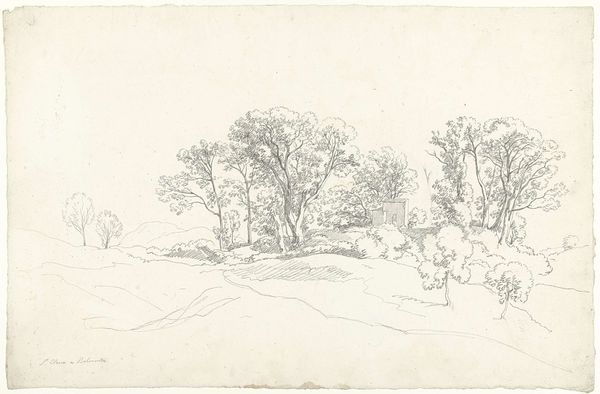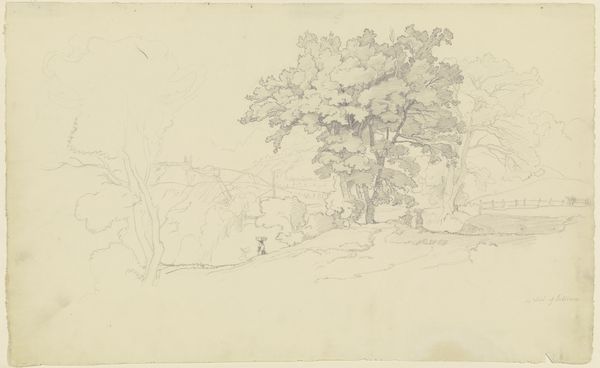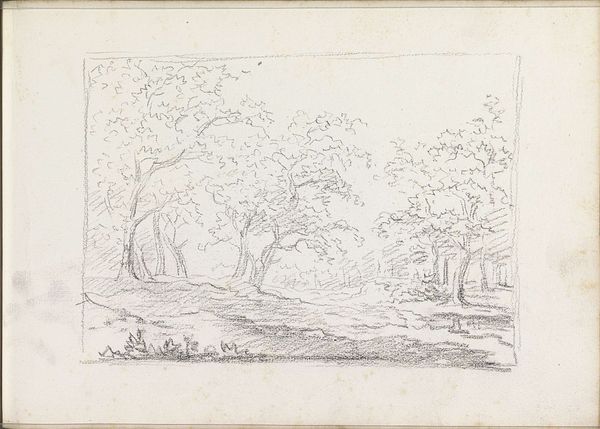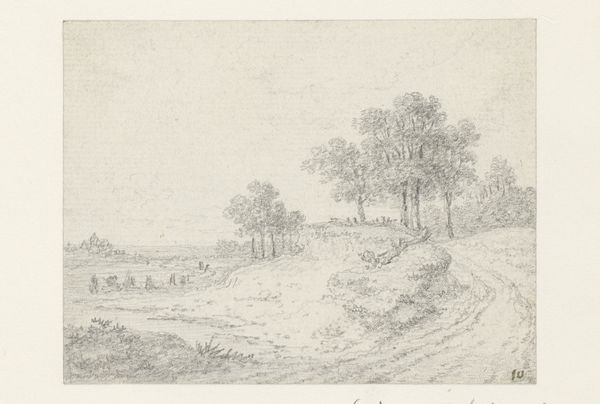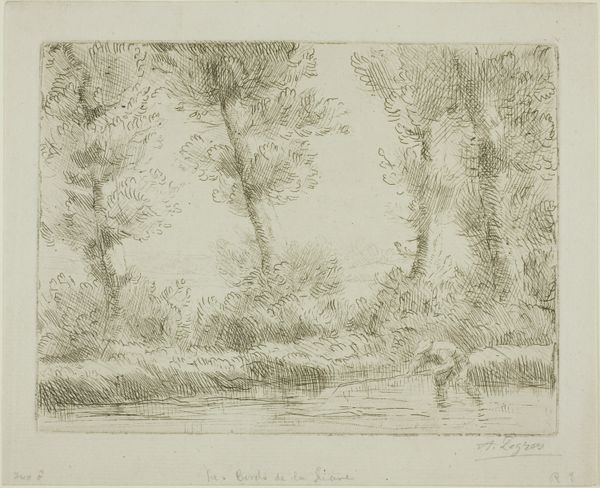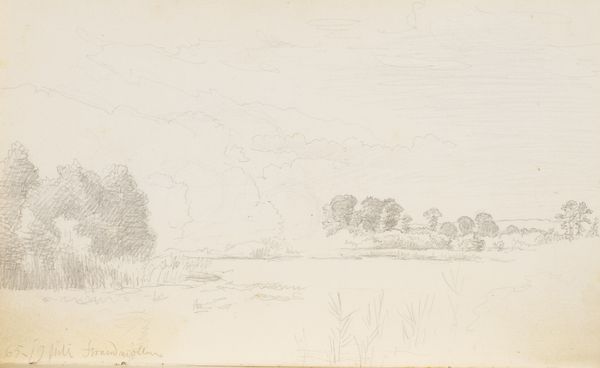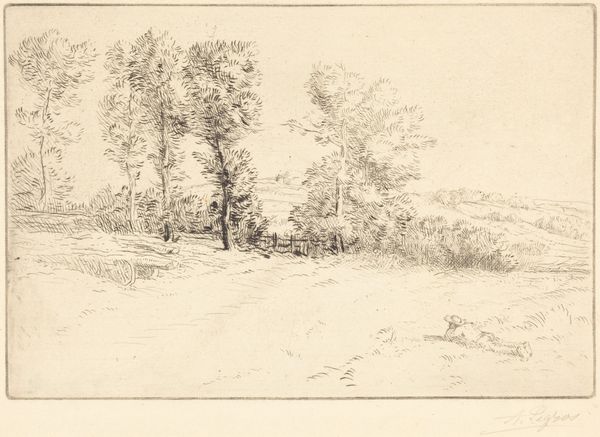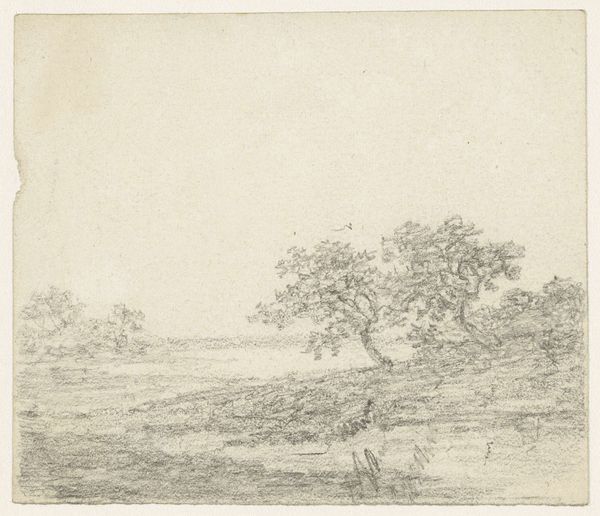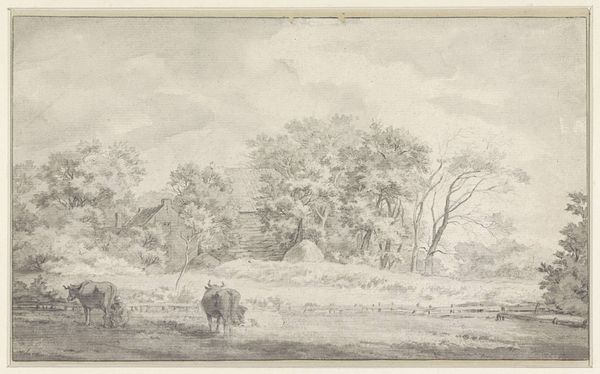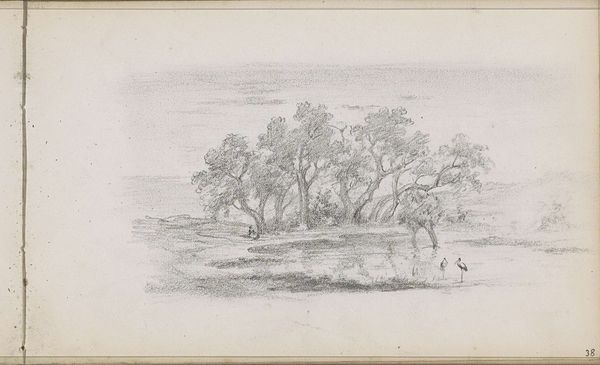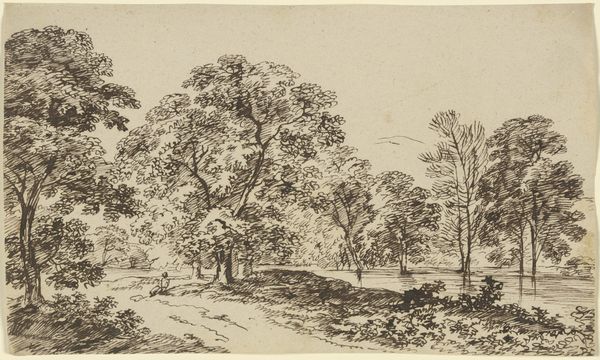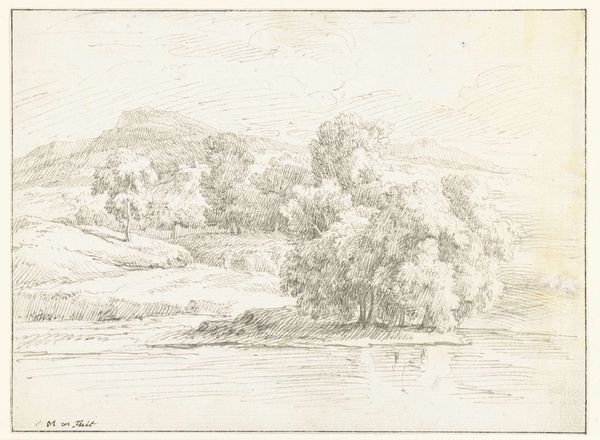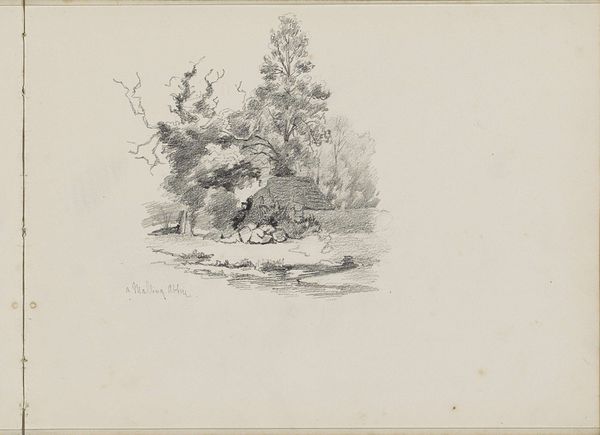
drawing, pencil
#
drawing
#
toned paper
#
light pencil work
#
quirky sketch
#
pencil sketch
#
sketch book
#
landscape
#
personal sketchbook
#
sketchwork
#
pen-ink sketch
#
pencil
#
sketchbook drawing
#
sketchbook art
#
realism
Dimensions: height 210 mm, width 275 mm
Copyright: Rijks Museum: Open Domain
Editor: This drawing, "Boogschieten," by Gerrit Postma, made with pencil on toned paper in 1858, captures a group of women practicing archery in a field. There's a distinct formality to the scene, yet the sketch-like quality gives it an air of informality, as if we're peeking into a private moment. What do you see in this piece, especially in how it depicts this group activity? Curator: I see echoes of ritual and tradition. Archery, across cultures, symbolizes precision, focus, and even aspiration. These women, engaging in what appears to be a social activity, remind me of Artemis, the Greek goddess associated with the hunt, wilderness, and women. Their attire, while suggesting leisure, hints at a codified practice. Is it a competition, perhaps? The very act of aiming towards a target implies a goal, a collective desire to achieve something specific. The targets are far and quite small, which brings attention to a deeper symbolic connection. What feelings are evoked for you with that level of detail? Editor: I get a sense of discipline, but also maybe camaraderie, a shared social experience rooted in skill and precision. It feels like more than just a sport; it's a moment of female empowerment, portrayed subtly. Curator: Precisely. The very deliberate poses of each figure imply more than just learning the physical skill. The light pencil work gives these figures an almost ephemeral quality. Archery in the 19th century was experiencing a revival in the United Kingdom, which would later make its way to Europe. It allowed women an acceptable activity within societal expectations. In a way, these figures act as cultural markers for their historical period. Don't you find their stances also possess strength of character? Editor: Yes, absolutely! I initially saw it as just a quaint scene, but I see it now as having undertones of women's agency and controlled power in what was primarily a male-dominated society. Curator: Exactly! The visual weight in seemingly simple imagery offers glimpses into the complex cultural landscape of the time, its psychological undercurrents, as it moves into our present-day memories.
Comments
No comments
Be the first to comment and join the conversation on the ultimate creative platform.
